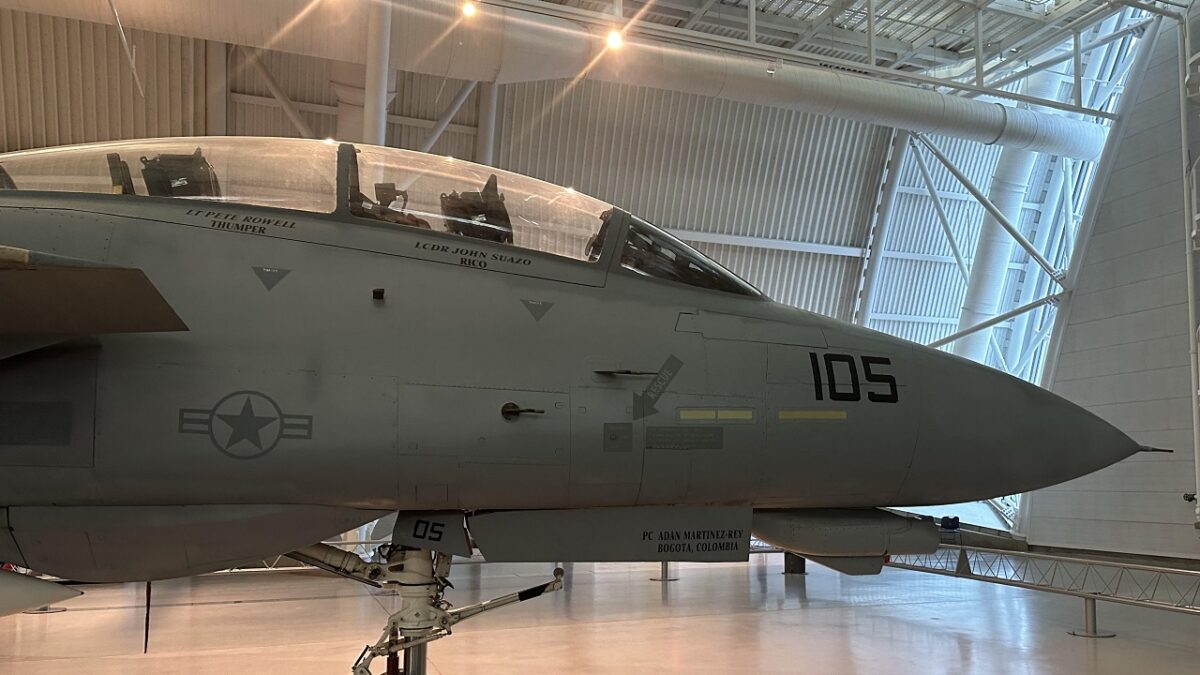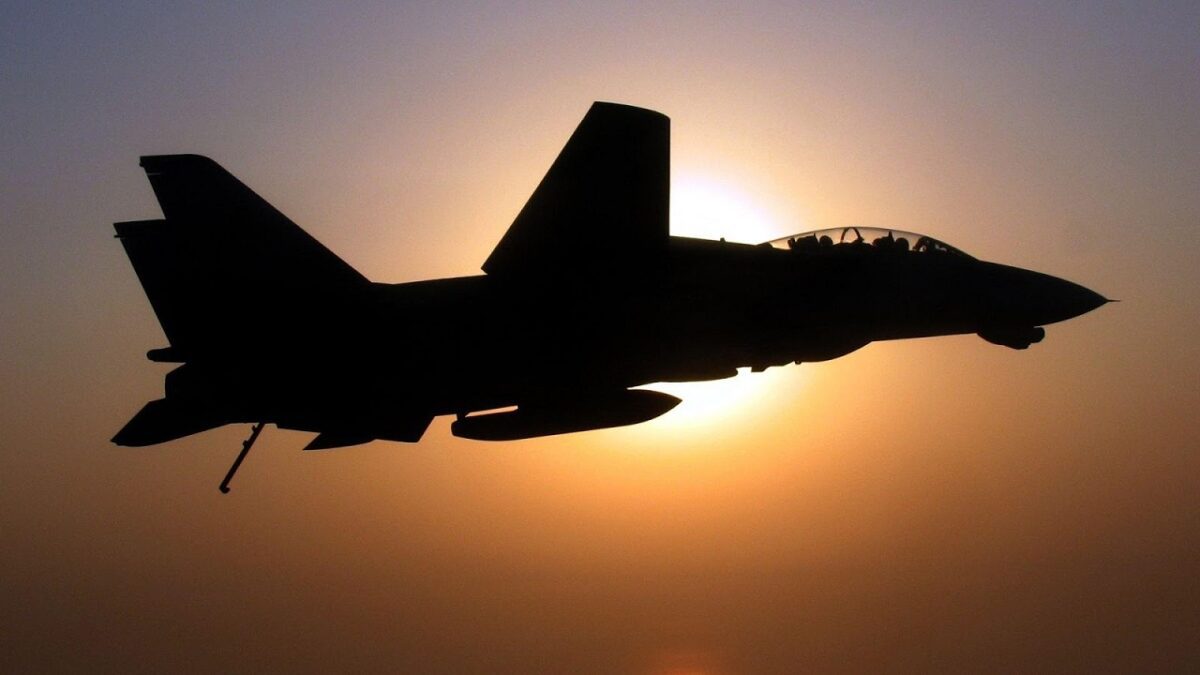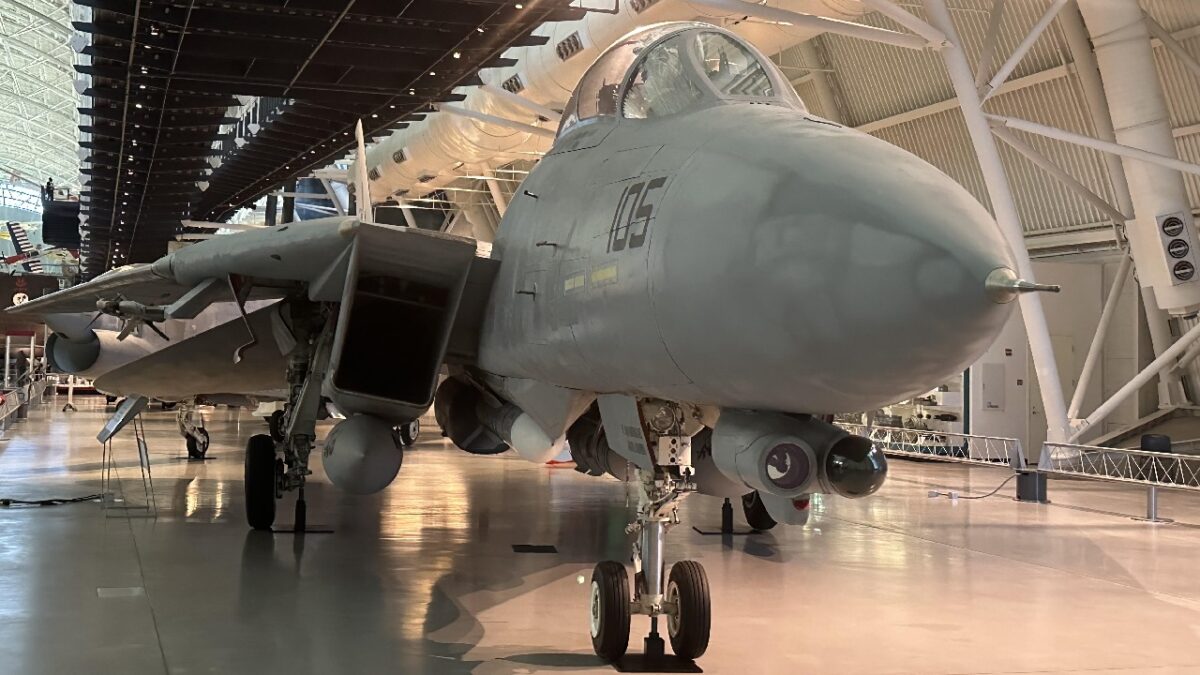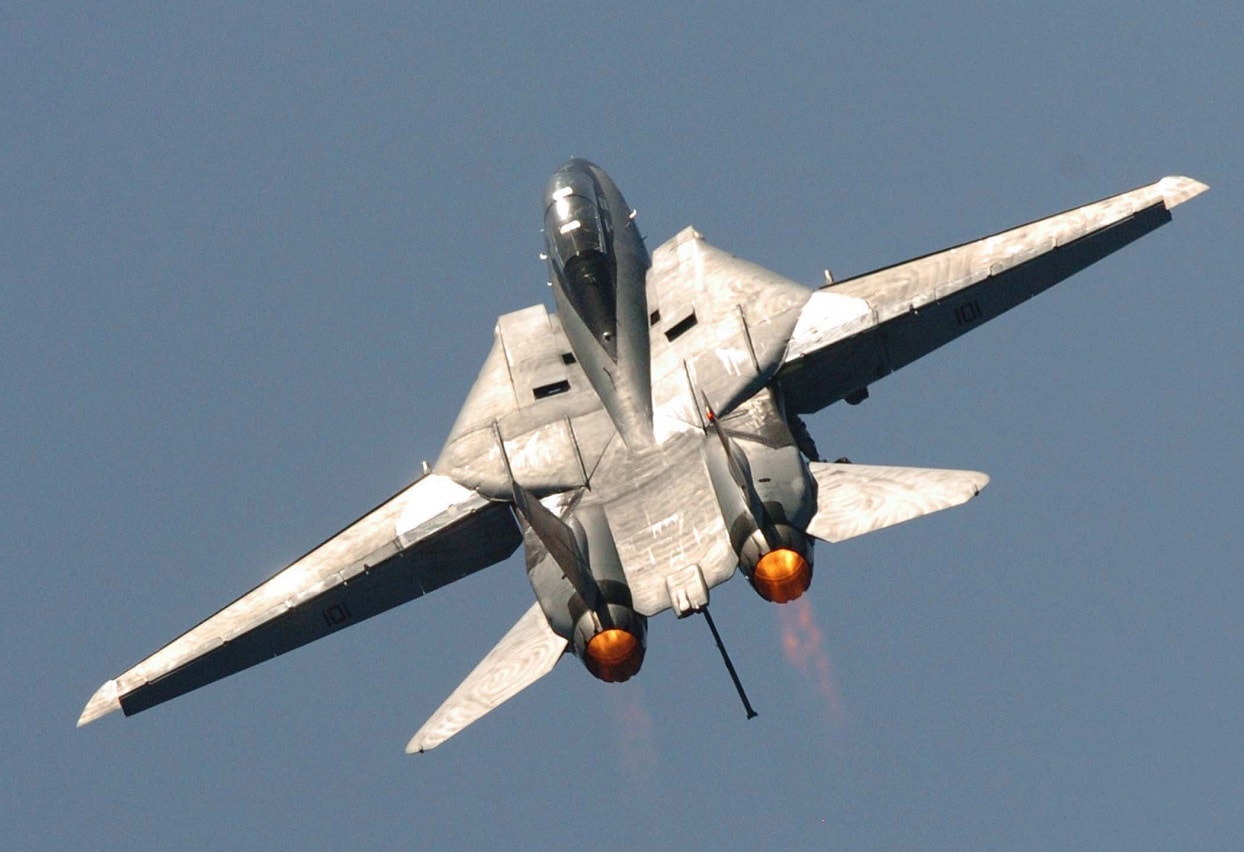See an F-14 Without Going Into the Danger Zone: It could be argued that the Grumman F-14 was as much a star of 1986’s original Top Gun as Tom Cruise and Val Kilmer. Designed to incorporate the air combat experience learned during the Vietnam War, the F-14 was the first of the American “Teen Series” fighters that included the F-15 Eagle, F-16 Fighting Falcon, and the F/A-18 Hornet. During its three decades in service with the United States Navy the F-14 Tomcat also more than lived up to the role it was designed for, drawing blood in combat and even getting its moment in the spotlight!
(We were at the National Air and Space Museum and filmed original footage of the F-14 Tomcat above.)
The two-seat carrier-based multi-role fighter was developed after the United States Congress had halted the development of the F-111B along with the Tactical Fighter Experimental (TFX) program. While the goal of that program was to supply both the United States Air Force and the United States Navy with the planes to fit each of their respective needs, the Navy was opposed. Instead, the Navy changed course and called for a request for proposal (RFP) for a new aircraft as part of its Naval Fighter Experimental (VFX) program, which called for a tandem two-seat, twin-engine air-to-air fighter.
Grumman was awarded the contract in January 1969 with its F-14 “Tomcat” – named so partially to honor Navy Admiral Thomas “Tomcat” Connelly who had called upon Congress for the Navy to develop a new carrier-based fighter.
F-14: Rocking the 70s
The F-14 supersonic, twin-engine, variable-sweep wing, the two-place fighter was designed to engage enemy aircraft in all weather conditions as well as at night. The Tomcat was also designed to track up to 24 targets simultaneously and featured an advanced weapons system that included a powerful Hughes AWG-9 radar, which was used in conjunction with the Phoenix AIM-54A missiles. It could successfully pick out and destroy a chosen target from a formation at a distance of over 100 miles. Additional armaments include a variety of other intercept missiles, rockets, bombs, and an internal M61A1 Vulcan 20mm Gatling-style rotary cannon.
With its variable-sweep wing, the F-14 could match the speeds of other aircraft as needed – and for takeoff and low-speed flight, the wings would shift to the front, while for supersonic speeds the wings could tuck backward. Because of its versatility, it served as an air superiority fighter, fleet defense interceptor, and even tactical reconnaissance platform. The aircraft first entered service in 1974, but the Tomcat only drew its first blood in August 1981 during the “Gulf of Sidra incident,” in which two F-14s were attacked by a pair of Libyan Su-22 Fitters.
Both of the enemy Fitters were shot down, and the event would be replayed nearly eight years later when in January 1989 another pair of F-14s shot down two Libyan MiG-23 “Floggers” again over the Gulf of Sidra.
Long Flying F-14 Tomcat
The United States Navy continued to rely on the F-14 throughout the 1990s and early 2000s, where it was utilized in strike escort and reconnaissance roles in Operation Desert Storm as well in Operation Deliberate Force and Operation Allied Force in the conflicts in the former Yugoslavia. The F-14’s final combat mission took place in February 2006 when two Tomcats were used in a bombing mission in Iraq.
While the F-14 was retired from service with the Navy in 2006, supplanted by the Boeing F/A-18E/F Super Hornet, the Tomcat remains in use with the Islamic Republic of Iran Air Force. Only a handful of the planes, which were purchased by the Imperial Iranian Air Force in the 1970s, remain in operation but according to reports these aircraft have flown escort missions in Syria proving that even after nearly 50 years the Tomcat still has sharp claws.

F-14 Tomcat. Image was taken at National Air and Space Museum on October 1, 2022. Image by 19FortyFive.
Today, aviation buffs don’t have to get into the “Danger Zone” to see an F-14 Tomcat up close. One is preserved at the Steven F. Udvar-Hazy Center, part of Smithsonian National Air and Space Museum (NASM)’s annex at Washington Dulles International Airport.

F-14 Tomcat. Image Credit: Creative Commons.

A U.S. Navy F-14D Tomcat aircraft from Fighter Squadron 31, sits on the flight line after completing its final flight at Naval Base North Island, San Diego, Calif., on Sept. 29, 2006. After 36 years of service, the Tomcat is being replaced by the F/A-18E/F Super Hornet aircraft.

An F-14 Tomcat aircraft makes an arrested landing on the flight deck of the nuclear-powered aircraft carrier USS DWIGHT D. EISENHOWER (CVN-69). The F-14 is assigned to Fighter Squadron 142 (VF-142).
The National Air and Space Museum’s Tomcat (BuNo. 159610) was originally built as an F-14A-85-GR, and was one of the few Tomcats that was modified as an F-14D(R) in the early 1990s. It is credited with one MiG kill which was earned on January 4, 1989, near the coast of Libya.

F-14 Tomcat. Image taken at National Air and Space Museum on October 1, 2022. Image by 19FortyFive.
MORE: B-21 Raider: China Should Fear America’s New Stealth Bomber
MORE: H-20: China Is Building a New Stealth Bomber
MORE: Is Russia’s Su-57 Felon Stealth Fighter a Total Bust?
A Senior Editor for 1945, Peter Suciu is a Michigan-based writer who has contributed to more than four dozen magazines, newspapers, and websites with over 3,000 published pieces over a twenty-year career in journalism. He regularly writes about military hardware, firearms history, cybersecurity, and international affairs. Peter is also a Contributing Writer for Forbes. You can follow him on Twitter: @PeterSuciu.

